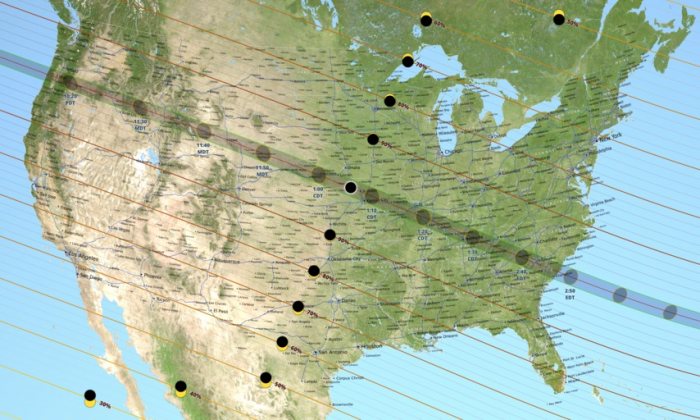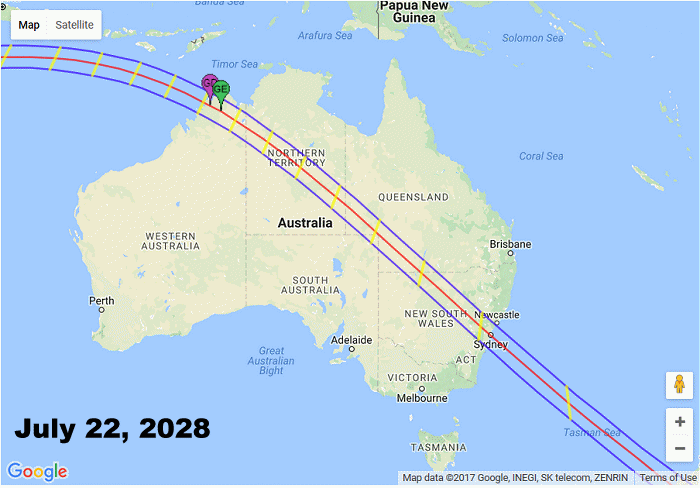
The path of the upcoming total solar eclipse – Image : NASA
A total solar eclipse that will darken a broad corridor of the US next month has raised concerns about the impact of sudden ramping down, then up, of solar generated electricity.
It’s a new experience for the USA. The last total solar eclipse visible in North America was in 1979, well before solar power systems began to be connected to the grid.
Bloomberg calculates more than 9,000 megawatts of solar capacity may be affected nationally, enough to supply around 7 million homes.
California will likely feel the effects the most as solar generation supplies up to 40 percent of the state’s demand on some days. The California Independent System Operator (ISO) says it has 10,000 MW of installed solar capacity on the its system.
The eclipse will occur between 9:02 a.m. and 11:54 a.m. California local time, with as much as 76% of sunlight being blocked depending on location of the resource.
Assuming good weather, the ISO anticipates a rapid loss of 4,194 megawatts of large scale solar capacity and increased demand from affected buildings with rooftop solar; amounting to a total net load increase of around 6,008 MW during the event. Additionally, there will be challenges associated with all that capacity ramping back up rapidly as the sun re-emerges – around 90 MW per minute compared to an average ramp rate of around 29 MW per minute during the 9 a.m. to noon period.
While some are forecasting doom for California’s mains supply, the ISO seems to be well prepared for the event, which it started planning for last year.
“The ISO will procure additional regulation and reserve capacity to assist with the rapid loss and return of solar generation during the eclipse. The ISO also plans to use abundant hydropower and flexible ramping energy. The transfer capability between Energy Imbalance Market (EIM) participants, who will be affected by the eclipse at slightly different times than the ISO, should provide additional flexibility.”
The ISO also points out it faces similar challenges on a regular basis in relation to cloud.
“Partially cloudy sky is the hardest weather to prepare for, due to the increase and decrease in ramp rates.”
Germany And Italy’s Experience
The situation isn’t without precedent. In 2015, Germany and Italy dealt with a total eclipse without incident. The Germans, who had nearly half of Europe’s installed solar capacity at the time, took a very technical approach; while Italy just disconnected 30 percent of its solar capacity to mitigate network balancing issues.
What About Australia?
Australia won’t be affected by the August 21 total eclipse event.

Image: NASA/Google
The next total solar eclipse in Australia will occur on July 22, 2028, with Sydney right in the middle of the path of totality as indicated in the image above.

 RSS - Posts
RSS - Posts



Speak Your Mind